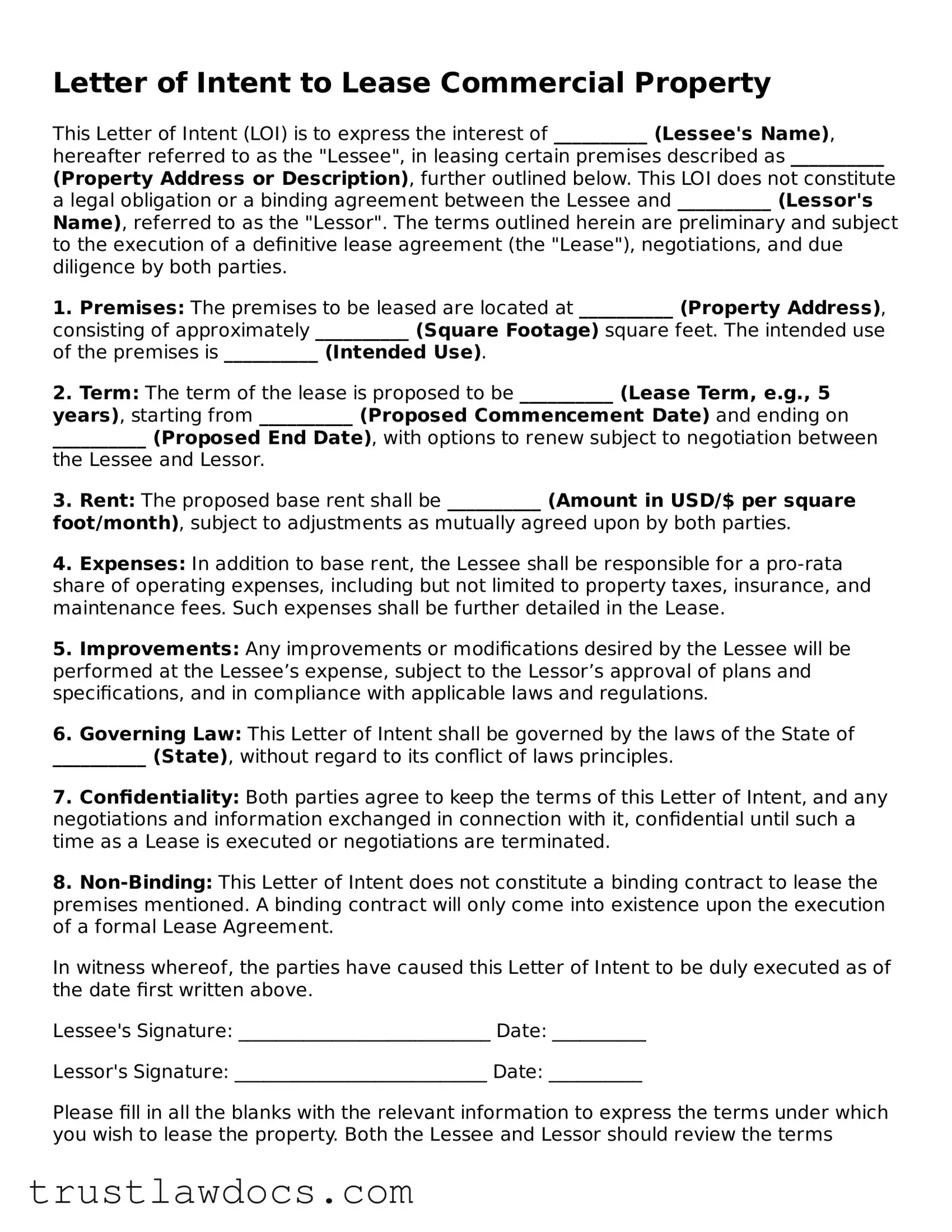Letter of Intent to Lease Commercial Property
This Letter of Intent (LOI) is to express the interest of __________ (Lessee's Name), hereafter referred to as the "Lessee", in leasing certain premises described as __________ (Property Address or Description), further outlined below. This LOI does not constitute a legal obligation or a binding agreement between the Lessee and __________ (Lessor's Name), referred to as the "Lessor". The terms outlined herein are preliminary and subject to the execution of a definitive lease agreement (the "Lease"), negotiations, and due diligence by both parties.
1. Premises: The premises to be leased are located at __________ (Property Address), consisting of approximately __________ (Square Footage) square feet. The intended use of the premises is __________ (Intended Use).
2. Term: The term of the lease is proposed to be __________ (Lease Term, e.g., 5 years), starting from __________ (Proposed Commencement Date) and ending on __________ (Proposed End Date), with options to renew subject to negotiation between the Lessee and Lessor.
3. Rent: The proposed base rent shall be __________ (Amount in USD/$ per square foot/month), subject to adjustments as mutually agreed upon by both parties.
4. Expenses: In addition to base rent, the Lessee shall be responsible for a pro-rata share of operating expenses, including but not limited to property taxes, insurance, and maintenance fees. Such expenses shall be further detailed in the Lease.
5. Improvements: Any improvements or modifications desired by the Lessee will be performed at the Lessee’s expense, subject to the Lessor’s approval of plans and specifications, and in compliance with applicable laws and regulations.
6. Governing Law: This Letter of Intent shall be governed by the laws of the State of __________ (State), without regard to its conflict of laws principles.
7. Confidentiality: Both parties agree to keep the terms of this Letter of Intent, and any negotiations and information exchanged in connection with it, confidential until such a time as a Lease is executed or negotiations are terminated.
8. Non-Binding: This Letter of Intent does not constitute a binding contract to lease the premises mentioned. A binding contract will only come into existence upon the execution of a formal Lease Agreement.
In witness whereof, the parties have caused this Letter of Intent to be duly executed as of the date first written above.
Lessee's Signature: ___________________________ Date: __________
Lessor's Signature: ___________________________ Date: __________
Please fill in all the blanks with the relevant information to express the terms under which you wish to lease the property. Both the Lessee and Lessor should review the terms outlined in this Letter of Intent carefully, making sure that they reflect the preliminary agreement before signing.
